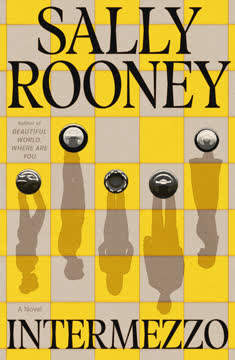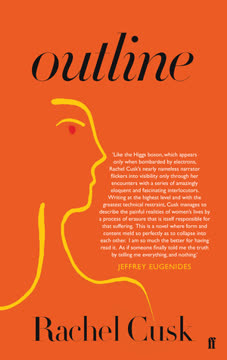Plot Summary
Venice's Melancholy Serenade
In Venice, a struggling Eastern European guitarist, Janeck, recognizes Tony Gardner, a once-famous American crooner, sitting alone in a piazza. Janeck's mother idolized Gardner, and the meeting is charged with nostalgia and reverence. Gardner, accompanied by his glamorous but brittle wife Lindy, proposes a romantic gondola serenade to rekindle their bond. As night falls, Janeck and Gardner drift through the canals, performing love songs beneath Lindy's window. The serenade, meant as a gesture of love, instead reveals the couple's impending separation. Gardner confides that, despite their enduring affection, the demands of image and career force them apart. The serenade becomes a bittersweet farewell, a ritual of love and loss, echoing the city's own faded grandeur.
Marriages in Twilight
Gardner and Lindy's marriage, once built on ambition and glamour, is now at a crossroads. Their Venice trip is not an anniversary but a final act before separation. Gardner explains to Janeck that in their world, love is not enough; public image and the need for reinvention demand sacrifice. The serenade, which moves Lindy to tears, is both a tribute to their shared past and an acknowledgment of their future apart. The story explores how time, ambition, and the pressures of public life erode even the deepest bonds, leaving only the music and memories as solace.
The Guest as Perspective
Ray, a drifting English teacher, visits his old university friends, Charlie and Emily, in London. Their marriage is strained, and Charlie enlists Ray as a "perspective guest"—someone whose presence will make Charlie look more successful by comparison. Ray is both a confidant and a pawn, caught in the couple's subtle power games. The visit exposes the quiet desperation beneath middle-aged domesticity, as Ray's own failings are used to prop up his friends' fragile union. The chapter explores the ways we use others to measure our own worth and the quiet bargains that sustain relationships.
The Diary and the Dog
Ray's stay takes a comic turn when he accidentally damages Emily's diary and, panicking, concocts an elaborate ruse involving a neighbor's dog to cover his tracks. Charlie, phoning from abroad, coaches Ray through increasingly absurd strategies to mask the mishap, including faking a dog smell with a bizarre kitchen concoction. The farce exposes the underlying anxieties and resentments in all three characters, culminating in a moment of honesty and forgiveness. The episode highlights the fragility of self-image and the lengths we go to avoid confrontation.
Dancing to Old Songs
As Ray and Emily share wine and old records, the music of their youth becomes a bridge across years of disappointment and change. They dance on the terrace, recalling the intimacy and hope of earlier days. The moment is fleeting but genuine, a reminder that shared history and small acts of kindness can momentarily dispel loneliness and regret. The chapter underscores music's power to evoke emotion and foster connection, even as life's realities intrude.
Dreams on Malvern Hills
A young, aspiring songwriter escapes London's failed auditions for his sister's café in the Malvern Hills. The countryside offers inspiration and nostalgia, but also confronts him with the limits of his talent and the expectations of family. Encounters with old teachers and locals stir memories of childhood insecurities. The hills become both a sanctuary and a stage for self-doubt, as the protagonist grapples with the tension between artistic dreams and the pull of ordinary life.
Sibling Rivalries and Songs
Living with his sister Maggie and her husband Geoff, the protagonist finds himself both welcomed and resented. His music, once a source of pride, becomes a point of contention as domestic routines and unspoken grievances surface. The struggle to carve out space for creativity amid family obligations mirrors the broader challenge of sustaining artistic ambition in a world indifferent to dreams. The chapter explores the quiet wounds and loyalties that shape sibling relationships.
The Swiss Musicians' Visit
A Swiss couple, Tilo and Sonja, visit the café, bringing with them both admiration for the English landscape and their own marital discord. Their presence prompts reflection on the universality of disappointment and the compromises of partnership. The protagonist bonds with them over music, but also witnesses the strains beneath their cheerful exterior. The encounter becomes a mirror for his own uncertainties about art, love, and the future.
The Unfinished Song
Inspired by the Swiss musicians, the protagonist works on a new song, believing it might be his breakthrough. Yet, as he observes the struggles of others and faces his own limitations, he questions whether talent and perseverance are enough. The unfinished song becomes a symbol of both potential and the inevitability of compromise. The chapter ends with a sense of unresolved longing, as the protagonist contemplates the path ahead.
Fame, Faces, and Facades
Steve, a talented but unremarkable-looking saxophonist, is persuaded by his manager and estranged wife to undergo plastic surgery in hopes of achieving stardom. Recuperating in a luxury hotel, his face swathed in bandages, Steve is surrounded by other "patients" seeking transformation. The process is both physically and existentially disorienting, as Steve confronts the emptiness of fame and the loss of authenticity. The chapter explores the pressures to conform to superficial ideals and the sacrifices demanded by ambition.
Bandages and Chess
Steve befriends Lindy Gardner, also recovering from surgery in the hotel. Their interactions—playing chess, sharing music, and confiding in each other—reveal the loneliness beneath their public personas. Both are haunted by the gap between their inner selves and the images they present to the world. Their friendship is tentative, marked by moments of understanding and misunderstanding, as they navigate the liminal space between anonymity and recognition.
The Stolen Award
In a surreal nocturnal adventure, Lindy steals a music award meant for another, presenting it to Steve as a gesture of recognition. Their attempt to return the trophy leads to a series of comic mishaps, culminating in a frantic escape through the hotel's labyrinthine corridors. The episode is both absurd and poignant, highlighting the arbitrary nature of success and the human need for acknowledgment. The farce exposes the emptiness of external validation and the longing for genuine achievement.
Cellists and Mentors
Tibor, a young Hungarian cellist, meets Eloise McCormack, an enigmatic American woman who claims to be a virtuoso. She offers guidance and inspiration, helping Tibor glimpse new artistic possibilities. Their relationship is intense but ambiguous, blending mentorship, friendship, and unspoken longing. Eloise's influence is both liberating and destabilizing, as Tibor becomes increasingly dependent on her approval and vision.
The Virtuoso Unwrapped
As their sessions continue, Tibor discovers that Eloise has not played the cello since childhood and may never have been a true virtuoso. Her belief in her own latent genius is unwavering, and she insists that her gift remains "unwrapped." The revelation forces Tibor to confront the dangers of self-delusion and the seductive power of flattery. Their bond, once a source of hope, becomes a cautionary tale about the need for honest self-assessment.
Departures and Disillusionments
Eloise leaves to marry a practical, kind man, and Tibor accepts a modest job in Amsterdam. Their parting is affectionate but tinged with disappointment. The promise of artistic greatness gives way to the realities of compromise and the slow erosion of dreams. The chapter reflects on the inevitability of change and the bittersweet nature of farewells.
Music's Echoes at Dusk
Years later, the narrator glimpses Tibor in Venice, changed and perhaps diminished by time. The encounter prompts reflection on the transience of artistic ambition and the enduring power of music to evoke longing and nostalgia. The city, the music, and the characters' lives are all suffused with the melancholy of nightfall—a time of endings and quiet reckonings.
The Enduring Lament
Across all stories, characters grapple with the gap between aspiration and reality, love and loss, youth and age. Music serves as both a balm and a reminder of what is unattainable. The nocturnes of the title are not just songs of night, but meditations on the shadows that fall over every life. The stories suggest that while fulfillment is elusive, the act of reaching—through music, love, or memory—remains meaningful.
Nightfall's Quiet Lessons
In the end, the collection offers no easy answers or redemptions. Instead, it finds dignity in endurance, humor in failure, and grace in small acts of kindness. The nightfall that closes each story is not just an ending, but a space for reflection and quiet acceptance. The music lingers, even as the players fade from the stage.
Characters
Janeck (Venetian Guitarist)
Janeck is a talented but marginalized musician, moving between café orchestras in Venice. As a foreigner and a guitarist in a city obsessed with tradition, he is both needed and never fully accepted. His encounter with Tony Gardner is charged with personal nostalgia and longing for connection. Janeck's role as a witness to others' dramas—especially the Gardners'—highlights his own sense of displacement and yearning for meaning. He is sensitive, humble, and attuned to the emotional undercurrents of those around him, embodying the outsider's perspective that recurs throughout the collection.
Tony Gardner
Once a celebrated crooner, Tony Gardner is now confronting the twilight of his career and marriage. Charismatic yet vulnerable, he is torn between the desire for a comeback and the reality of fading relevance. His relationship with Lindy is complex—rooted in ambition, affection, and mutual understanding, but ultimately undone by the demands of public image. Gardner's willingness to stage a final romantic gesture, even as he orchestrates his own exit, reveals both his sentimentality and pragmatism.
Lindy Gardner
Lindy is Tony's wife and later a patient recovering from surgery. She is both a symbol of Hollywood glamour and a deeply insecure woman, haunted by the need for recognition and love. Her interactions with Janeck, Tony, and Steve reveal a mix of charm, vulnerability, and volatility. Lindy's belief in reinvention—through marriage, surgery, or public acclaim—masks a profound loneliness. Her impulsive actions, such as stealing an award, are desperate bids for meaning in a world that prizes surfaces over substance.
Ray
Ray is a drifting English teacher whose lack of worldly success makes him the perfect "perspective guest" for Charlie and Emily. He is gentle, self-deprecating, and acutely aware of his own shortcomings. Ray's role as a foil for his friends' anxieties exposes the quiet cruelties and dependencies of long-term relationships. His capacity for empathy and forgiveness, even when used as a tool by others, is both his strength and his burden.
Charlie
Charlie is Ray's old friend and Emily's husband. Outwardly successful, he is plagued by the sense that he has not lived up to his potential. Charlie's strategy of inviting Ray to make himself look better is both comic and sad, revealing the fragility of his self-esteem. His emotional volatility and need for validation drive much of the story's tension, as he oscillates between self-pity and bravado.
Emily
Emily, once vibrant and passionate about music, is now weighed down by disappointment and the routines of middle age. Her relationship with Ray is tinged with both affection and exasperation, as she projects her own regrets onto him. Emily's longing for the past, expressed through music and memory, is both a source of comfort and a trap. Her capacity for forgiveness and her desire for connection ultimately offer a measure of hope.
Steve (Saxophonist)
Steve is a gifted musician whose unremarkable appearance has kept him from stardom. Pressured by his manager and estranged wife, he undergoes plastic surgery in a bid for success. Steve's journey is marked by self-doubt, existential questioning, and a longing for authenticity. His interactions with Lindy Gardner, both comic and poignant, expose the emptiness of external validation and the difficulty of reconciling ambition with self-respect.
Eloise McCormack
Eloise is an American woman who claims to be a cello virtuoso, offering guidance to the young Tibor. Her mentorship is both inspiring and delusional, as it becomes clear she has never fulfilled her own artistic promise. Eloise's belief in her latent genius is a form of self-protection, allowing her to avoid the risks and disappointments of actual performance. Her relationship with Tibor is intense, ambiguous, and ultimately a cautionary tale about the dangers of self-deception.
Tibor
Tibor is a Hungarian cellist at the start of his career, full of hope and vulnerability. His encounter with Eloise offers a glimpse of artistic transcendence, but also exposes him to the perils of misplaced trust. Tibor's journey from idealism to disillusionment mirrors the broader themes of the collection, as he learns to navigate the gap between aspiration and reality. His eventual acceptance of a modest job and the fading of his dreams are rendered with empathy and restraint.
Tilo and Sonja
Tilo and Sonja are Swiss musicians whose visit to the Malvern Hills café brings both admiration and marital tension. Their outward harmony masks deeper frustrations and regrets, reflecting the complexities of long-term partnership. Their interactions with the protagonist and each other highlight the universality of disappointment and the need for resilience in the face of life's compromises.
Plot Devices
Interconnected Stories and Recurring Motifs
The collection is structured as five loosely connected stories, each centered on music and set at dusk or night. Music serves as both a literal and symbolic thread, representing longing, memory, and the search for meaning. Nightfall, with its associations of ending and reflection, frames each narrative, underscoring themes of loss, transition, and acceptance. The stories echo and refract each other, creating a cumulative effect greater than the sum of their parts.
Outsider Narrators and Shifting Perspectives
Most stories are told from the perspective of outsiders—musicians, guests, or newcomers—who observe and participate in the dramas of others. This narrative distance allows for both empathy and irony, as characters struggle to interpret the motives and emotions of those around them. The use of first-person narration invites readers into the characters' inner worlds, while also highlighting the gaps between perception and reality.
Irony, Farce, and Melancholy
Ishiguro employs irony and gentle farce—such as the diary-dog ruse or the stolen award caper—to expose the absurdities of human behavior. These comic elements are never merely playful; they serve to illuminate deeper currents of sadness, disappointment, and longing. The juxtaposition of humor and melancholy creates a distinctive tone, at once light and profound.
Foreshadowing and Circular Structure
The stories often circle back on themselves, with motifs and phrases recurring in different contexts. Endings are rarely conclusive; instead, they leave characters—and readers—in a state of suspension, contemplating what might have been. This open-endedness reinforces the themes of uncertainty and the persistence of hope amid disappointment.
Analysis
Nocturnes: Five Stories of Music and Nightfall is a masterful meditation on the interplay between art, love, and the passage of time. Through interconnected tales of musicians and dreamers, Ishiguro explores the universal longing for recognition, the pain of compromise, and the quiet dignity of endurance. Music, in these stories, is both a source of solace and a reminder of what is lost or unattainable. The collection's gentle humor and understated melancholy invite readers to reflect on their own aspirations and regrets, suggesting that while fulfillment may be elusive, the act of reaching—through art, connection, or memory—remains profoundly human. In the end, Ishiguro offers no easy answers, but finds beauty in imperfection, resilience in disappointment, and meaning in the fleeting moments of harmony that punctuate life's inevitable nightfall.
The interconnected stories and recurring motifs create a rich tapestry of human experience, with each tale echoing and amplifying the themes of the others. The use of outsider narrators and shifting perspectives allows Ishiguro to explore the complexities of human relationships and the often unbridgeable gaps between individuals. Characters like Janeck, Ray, and Tibor serve as both observers and participants, their outsider status providing a unique lens through which to view the dramas unfolding around them.
The irony, farce, and melancholy that permeate the stories create a delicate balance between humor and pathos. Episodes such as Ray's attempts to cover up his diary mishap or Lindy and Steve's misadventure with the stolen award highlight the absurdities of human behavior while also revealing deeper truths about loneliness, insecurity, and the need for validation.
The foreshadowing and circular structure of the narratives reinforce the themes of memory, regret, and the cyclical nature of human experience. Characters like Tony Gardner and Eloise McCormack are haunted by their pasts, their present actions shaped by earlier triumphs and failures. The open-ended nature of many of the stories invites readers to contemplate the characters' futures and reflect on their own unresolved narratives.
Throughout the collection, music serves as both a literal and metaphorical presence, embodying the characters' hopes, regrets, and fleeting moments of connection. From Janeck's serenade in Venice to Tibor's cello lessons with Eloise, music becomes a vehicle for exploring the gap between artistic aspiration and human limitation.
In the end, Nocturnes offers a poignant reflection on the human condition, finding beauty and meaning in the imperfect melodies of everyday life. Through his cast of dreamers, strivers, and disillusioned artists, Ishiguro invites us to consider our own nocturnes—the bittersweet songs that accompany us through life's twilight moments.
Last updated:
FAQ
Synopsis & Basic Details
What is Nocturnes: Five Stories of Music and Nightfall about?
- A collection of interconnected tales: Kazuo Ishiguro's Nocturnes presents five distinct yet thematically linked stories, each exploring the lives of musicians and dreamers grappling with ambition, love, and the passage of time, often set against the backdrop of nightfall. The narratives delve into the bittersweet realities of artistic aspiration and personal relationships, revealing the quiet compromises and enduring hopes that shape human experience.
- Music as a central motif: From a Venetian piazza to the Hollywood Hills, music serves as both a literal and symbolic presence, embodying characters' deepest longings, memories, and the elusive search for meaning. The stories feature a crooner facing the end of his career, a saxophonist seeking a new face for fame, a young cellist under the sway of a mysterious mentor, and a struggling songwriter finding inspiration in the Malvern Hills.
- Themes of identity and disillusionment: The collection navigates the complex interplay between public image and private self, the allure of celebrity versus the integrity of art, and the often-painful gap between youthful dreams and adult realities. Characters confront their own limitations, the fragility of relationships, and the universal human need for connection and validation in a world that often values superficiality.
Why should I read Nocturnes: Five Stories of Music and Nightfall?
- Masterful exploration of human emotion: Ishiguro's signature understated prose delves deep into the psychological and emotional landscapes of his characters, offering poignant insights into loneliness, regret, and the quiet dignity of endurance. Readers seeking a nuanced portrayal of the human condition will find profound resonance in these tales.
- Unique blend of humor and melancholy: The collection seamlessly weaves moments of gentle farce and irony with profound sadness, creating a distinctive tone that is both entertaining and deeply moving. This balance allows for a fresh perspective on life's absurdities and heartbreaks, making the stories memorable and thought-provoking.
- A fresh take on universal themes: Nocturnes offers a compelling meditation on the nature of art, the compromises of love, and the relentless march of time, inviting readers to reflect on their own aspirations and the paths they've chosen. The interconnectedness of the stories enriches the thematic tapestry, providing a cumulative impact that lingers long after the final page.
What is the background of Nocturnes: Five Stories of Music and Nightfall?
- Ishiguro's thematic continuity: The collection continues Kazuo Ishiguro's long-standing exploration of memory, identity, and the unreliability of perception, themes prominent in his earlier works like The Remains of the Day and Never Let Me Go. Here, these themes are filtered through the lens of music and the entertainment industry, adding a layer of glamour and artifice.
- Global settings, universal struggles: The stories traverse diverse geographical and cultural landscapes—Venice, London, the Malvern Hills, Hollywood—yet they consistently highlight universal human struggles. This global backdrop underscores the idea that the pursuit of dreams, the pain of disappointment, and the complexities of relationships transcend national borders.
- Critique of celebrity culture: Published in 2009, the book subtly critiques the increasing emphasis on image and marketability in the modern world, particularly within the music and entertainment industries. Characters often find themselves compromising their artistic integrity or personal authenticity in pursuit of fame, reflecting contemporary anxieties about superficiality.
What are the most memorable quotes in Nocturnes: Five Stories of Music and Nightfall?
- "Just some crooner from a bygone era." (Tony Gardner, "Crooner"): This self-deprecating remark by Tony Gardner, a once-famous singer, encapsulates the poignant theme of fading relevance and the brutal honesty of the entertainment industry. It highlights the transient nature of fame and the struggle to maintain dignity as one's star declines, a central 'Tony Gardner motivation' and 'themes in Nocturnes' insight.
- "You're like a man on the precipice. One more tiny push and you'll crack." (Emily, "Come Rain or Come Shine"): Emily's harsh but perceptive assessment of Ray's stagnant life reveals the underlying anxieties and frustrations within their friendship, and Ray's 'psychological complexity'. It speaks to the pressure of societal expectations and the fragility of self-worth when dreams remain unfulfilled.
- "The fact that I've not yet learned to play the cello doesn't really change anything. You have to understand, I am a virtuoso. But I'm one who's yet to be unwrapped." (Eloise McCormack, "Cellists"): This quote from Eloise McCormack, a self-proclaimed virtuoso who has never played, is central to the 'Eloise McCormack character analysis' and 'symbolism explained' in the collection. It embodies the theme of self-delusion, the protection of unfulfilled potential, and the seductive power of an imagined greatness over the messy reality of practice and performance.
What writing style, narrative choices, and literary techniques does Kazuo Ishiguro use?
- Understated and precise prose: Ishiguro employs a deceptively simple and elegant prose style, often characterized by a quiet, reflective tone. This 'Ishiguro writing style' allows for deep emotional resonance without overt melodrama, inviting readers to infer much from what is left unsaid, enhancing the 'emotional analysis' of characters.
- First-person, often unreliable narration: Each story is told from a first-person perspective, immersing the reader in the protagonist's subjective experience. This 'narrative choice' often introduces an element of unreliability, as characters' perceptions, memories, and self-deceptions color their accounts, prompting 'interpretive debates' about the true nature of events and motivations.
- Tragicomedy and subtle irony: Ishiguro masterfully blends moments of gentle humor and outright farce with profound melancholy. This 'literary technique' creates a unique tragicomic atmosphere, where the absurdities of life often mask deeper sadness and longing, as seen in the 'Ray character analysis' and 'Lindy Gardner motivations'.
Hidden Details & Subtle Connections
What are some minor details that add significant meaning?
- Janeck's guitar choice: In "Crooner," Janeck switches from his "vintage jazz model" to a "Spanish guitar" for the serenade. This subtle detail suggests a shift from professional performance (the Django Reinhardt-esque jazz guitar for the piazza) to a more intimate, heartfelt expression, aligning with the romantic, albeit ultimately tragic, nature of Tony Gardner's gesture. It highlights the 'symbolism of music' and personal connection over commercial appeal.
- The "penthouse" metaphor for ambition: Tony Gardner's cynical explanation of Lindy's career path – "A girl's got to be prepared to get out of the elevator at the second floor, walk around... Then maybe, one day, on that second floor, she'll run into someone who's come down from the penthouse" – reveals a transactional view of relationships in the celebrity world. This 'Lindy Gardner analysis' shows how ambition, rather than love, often dictates the trajectory of their lives, a key 'themes in Nocturnes' insight.
- Emily's purple notebook: In "Come Rain or Come Shine," Ray's discovery of Emily's "jotter" with the entry "Buy wine for arrival of Prince of Whiners" (referring to him) is a seemingly minor detail that profoundly impacts his self-perception. It exposes the unspoken resentments and the gap between how Ray sees himself and how his friends perceive him, adding depth to 'Ray's psychological complexity' and the 'relationship dynamics explained'.
What are some subtle foreshadowing and callbacks?
- Tony Gardner's sardonic laugh: Early in "Crooner," Janeck recalls a Tony Gardner song where the singer uses a "sardonic laugh" when singing about a woman leaving him. This 'Tony Gardner character analysis' subtly foreshadows the bittersweet, almost detached manner in which Tony later reveals his impending separation from Lindy, suggesting a long-standing emotional pattern or a performative aspect to his pain.
- The recurring "unwrapping" motif: Eloise McCormack's assertion in "Cellists" that she is a "virtuoso... yet to be unwrapped" is a powerful piece of 'symbolism explained'. This concept echoes throughout the collection, particularly in "Nocturne" where Steve's bandaged face awaits its "unveiling," linking the physical transformation to the metaphorical unveiling of artistic potential or true identity, a key 'themes in Nocturnes' element.
- The "crooner" title: The title of the first story, "Crooner," is a callback to Tony Gardner's profession, but also subtly foreshadows the performative nature of many characters' lives. From Tony's serenade to Eloise's self-proclaimed virtuosity, characters often "croon" or perform versions of themselves, highlighting the 'identity analysis' and facades they maintain.
What are some unexpected character connections?
- Lindy Gardner and Eloise McCormack's shared delusion: While they never meet, Lindy's desperate pursuit of fame through cosmetic surgery and her belief in external validation ("It'll make such a difference, believe me. You'll be in magazines, you'll be on TV") mirrors Eloise McCormack's self-delusion about her "unwrapped" cello virtuosity. Both women cling to an idealized self, avoiding the messy reality of genuine artistic or personal effort, offering a profound 'character connection analysis' and 'themes in Nocturnes' insight into self-deception.
- Ray and Tibor as "perspective" figures: Ray is explicitly invited by Charlie to be a "perspective guest" to make Charlie feel better about his own life. Similarly, Tibor, the young cellist, becomes a vessel for Eloise's unfulfilled artistic dreams, a projection of her own "virtuosity." Both characters are used by others to reflect or validate their own aspirations and insecurities, highlighting the 'psychological complexities' of human relationships and the burden of being a mirror.
- The "outsider" musicians: Janeck, the "gypsy" guitarist in Venice, and Steve, the saxophonist undergoing surgery, both represent talented musicians struggling for recognition in a commercialized world. Their shared status as outsiders, either by nationality or appearance, connects their individual struggles to a broader commentary on the challenges of artistic integrity and authenticity in the face of industry pressures, a key 'themes in Nocturnes' element.
Who are the most significant supporting characters?
- Meg (Lindy's mentor in "Crooner"): Meg, the diner waitress who coaches ambitious girls on how to "marry a star," is crucial to understanding Lindy Gardner's motivations and the cynical underbelly of Hollywood ambition. Her pragmatic, almost mercenary advice shaped Lindy's early life, revealing the transactional nature of relationships in the pursuit of fame, a key 'Lindy Gardner character analysis'.
- Bradley Stevenson (Steve's manager in "Nocturne"): Bradley embodies the ruthless, image-obsessed side of the music industry. His relentless persuasion for Steve to undergo plastic surgery, and his cynical "scheme" theory about Helen, highlights the pressures artists face to conform to market demands. He serves as a catalyst for Steve's existential crisis, driving the 'Steve motivations' and the 'themes in Nocturnes' about authenticity.
- Vittorio (the gondolier in "Crooner"): Vittorio, with his casual racism towards "foreigners from the new countries," provides a stark contrast to the romanticized image of Venice. His presence subtly underscores Janeck's outsider status and the underlying social tensions, adding a layer of realism to the setting and highlighting the 'Janeck character analysis' as a marginalized figure.
Psychological, Emotional, & Relational Analysis
What are some unspoken motivations of the characters?
- Lindy Gardner's fear of irrelevance: Beyond the desire for fame, Lindy's actions, particularly her plastic surgery and the impulsive theft of the award, are driven by a deep-seated fear of becoming irrelevant or "just public." Her need for constant validation stems from a profound insecurity, a core 'Lindy Gardner motivation' that she masks with glamour and charm, as explored in 'Lindy Gardner psychological analysis'.
- Charlie's need for external validation: Charlie's elaborate scheme to use Ray as a "perspective guest" is not just about making himself look better to Emily, but a desperate attempt to validate his own life choices and career path. His emotional outbursts and self-pity reveal a deep-seated insecurity about his achievements, a key 'Charlie motivations' insight into his 'psychological complexity'.
- Eloise McCormack's self-preservation of potential: Eloise's refusal to play the cello, despite claiming to be a virtuoso, is an unspoken motivation to protect an idealized version of herself. By never performing, she avoids the risk of failure and the harsh judgment of the real world, preserving her "gift" in an "unwrapped" state. This 'Eloise McCormack character analysis' highlights the 'psychological complexity' of self-deception and the fear of confronting one's true capabilities.
What psychological complexities do the characters exhibit?
- Arrested development and nostalgia (Ray): Ray, the English teacher, exhibits a form of arrested development, clinging to the past and avoiding significant life changes. His comfort in others' homes and his inability to take charge of his own life reveal a deep-seated passivity. Emily's exasperation ("This 'only,' this is what's destroying your life, Raymond") points to his 'psychological complexity' of perpetual adolescence and the comfort he finds in being a perpetual "guest" in life, a key 'Ray character analysis'.
- Performative love and transactional relationships (Tony Gardner): Tony Gardner's relationship with Lindy, as revealed in his explanation for their separation, is complexly performative. He loves her, but their bond is also deeply intertwined with career and image. His serenade, while romantic, is also a final act in a public drama, showcasing the 'psychological complexity' of love within a celebrity context where personal feelings are often secondary to professional demands, a core 'Tony Gardner motivations' insight.
- Projection and idealization (Eloise and Tibor): Eloise projects her unfulfilled artistic dreams onto Tibor, idealizing his potential as a reflection of her own imagined genius. Tibor, in turn, initially idealizes Eloise as a mentor who can unlock his true talent. This dynamic reveals the 'psychological complexity' of projection and the dangers of seeking validation through another, leading to a 'relationship dynamics analysis' of mutual, albeit ultimately harmful, idealization.
What are the major emotional turning points?
- Tony Gardner's confession of separation: The moment Tony Gardner reveals to Janeck that he and Lindy are separating, despite still loving each other, is a profound emotional turning point in "Crooner." It shatters the romantic illusion of the serenade and exposes the harsh realities of celebrity life, where love is sacrificed for career reinvention. This 'emotional analysis' highlights the bittersweet nature of their farewell and the 'themes in Nocturnes' about compromise.
- Ray's realization of Charlie's manipulation: When Ray understands that Charlie invited him to be a "Mr. Perspective" to make himself look better to Emily, it's a significant emotional shift. This 'Ray character analysis' moves from passive acceptance to a dawning awareness of his role in his friends' marital drama, revealing the subtle cruelties and dependencies within their long-standing friendship, a key 'relationship dynamics explained'.
- Tibor's discovery of Eloise's deception: The revelation that Eloise McCormack has never played the cello, despite her claims of virtuosity, is a major emotional turning point for Tibor. It forces him to confront the illusion he's been living under and the true nature of his mentor, leading to disillusionment but also a clearer path for his own artistic journey, central to 'Tibor's emotional analysis' and 'Eloise McCormack motivations'.
How do relationship dynamics evolve?
- From romantic ideal to pragmatic separation (Tony & Lindy): The relationship between Tony and Lindy Gardner evolves from a glamorous, ambitious partnership to a pragmatic, albeit loving, separation driven by career demands. Their serenade, initially a romantic gesture, becomes a poignant farewell, illustrating how external pressures can redefine even deep affection, a key 'relationship dynamics explained' in 'Nocturnes'.
- From codependency to strained honesty (Charlie & Emily): Charlie and Emily's marriage is characterized by a codependent dynamic where Ray is used as a buffer and a tool for their unspoken resentments. Through Ray's presence and the farcical diary incident, their relationship is forced into moments of raw honesty, revealing underlying frustrations and a fragile attempt at reconciliation, offering a deep 'relationship dynamics analysis'.
- From idealized mentorship to disillusionment (Tibor & Eloise): Tibor's relationship with Eloise McCormack transforms from an inspiring mentorship, where he idealizes her as a virtuoso, to a disillusioning realization of her self-deception. This evolution highlights the dangers of misplaced trust and the importance of authentic self-discovery in an artist's journey, a crucial 'Tibor character analysis' and 'Eloise McCormack motivations' insight.
Interpretation & Debate
Which parts of the story remain ambiguous or open-ended?
- The true nature of Steve's post-surgery face: In "Nocturne," Steve's new face is never explicitly described after the bandages come off. The story ends with him still bandaged, contemplating his future. This ambiguity leaves the reader to wonder if the surgery truly "fixed" his perceived ugliness or if it merely replaced one facade with another, prompting 'interpretive debates' about the superficiality of fame and the elusive nature of self-acceptance, a key 'Steve character analysis'.
- The long-term fate of Charlie and Emily's marriage: While Ray's visit brings a temporary truce and a moment of connection, the underlying issues in Charlie and Emily's marriage remain unresolved. Charlie's continued insecurity and Emily's disillusionment suggest that their "reconciliation" is fragile, leaving the reader to question whether their relationship can truly recover or if they are destined to repeat their patterns, a central 'relationship dynamics explained' ambiguity.
- The ultimate success of the Malvern Hills songwriter: The young songwriter's journey ends with his song still unfinished and his future uncertain. While Tilo and Sonja offer encouragement, Sonja's parting words ("life will bring enough disappointments. If on top, you have such dreams as this...") cast a shadow of doubt. This open-endedness reflects the precarious nature of artistic ambition and leaves the reader to ponder whether he will achieve his dreams or succumb to the compromises of life, a key 'themes in Nocturnes' and 'artist's journey analysis'.
What are some debatable,
Review Summary
Nocturnes receives mixed reviews, with some praising Ishiguro's delicate style and the interconnected themes of music and nightfall. Critics appreciate the subtle emotional journeys and poetic atmosphere. However, others find the stories lacking in plot and character development, with some protagonists described as unlikable. The collection's strengths lie in its exploration of regret, lost dreams, and human connections. While some readers find the stories compelling and well-crafted, others feel they fall short of Ishiguro's usual standards, particularly in comparison to his novels.
Similar Books
Download PDF
Download EPUB
.epub digital book format is ideal for reading ebooks on phones, tablets, and e-readers.
















